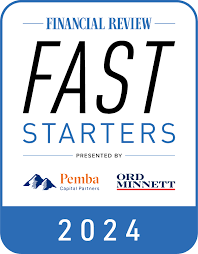Measuring the success of your LinkedIn Ads
So, how do you know if your LinkedIn Ads are successful? The key is to track the right metrics and use them to inform your strategy. Some important metrics to track include:
Cost per click (CPC):
- This is the amount you pay for each click on your ad.
- A lower CPC can mean you're getting more value for your money.
Click-through rate (CTR):
- This is the percentage of people who click on your ad after seeing it.
- A higher CTR means your ad is more relevant and effective.
Conversion rate:
- This is the percentage of people who complete a desired action (like making a purchase) after clicking on your ad.
- A higher conversion rate means your ad is effectively driving sales.
Engagement rate:
- This is a measure of how much your audience is interacting with your ad, such as by commenting, liking, or sharing it.
- A higher engagement rate can be a good indicator of the effectiveness of your ad.
Return on ad spend (ROAS):
- This is the amount of revenue you generate for every dollar you spend on advertising.
- A higher ROAS means you're getting a good return on your investment.
In addition to the metrics mentioned above, LinkedIn Ads also offer a unique feature called LinkedIn Lead Gen Forms. These forms can be added to your sponsored content or sponsored InMail ads and allow users to submit their contact information with just one click, without having to leave the platform. This can help simplify the lead generation process and increase conversions.
Another way to maximise the effectiveness of your LinkedIn Ads is to take advantage of LinkedIn's advanced targeting options. You can target users based on a variety of criteria, including job title, company size, industry, location, and more. You can also create custom audiences based on your existing contacts or website visitors.
Finally, third-party tools can help you get even more out of your LinkedIn Ads campaigns. These tools can provide advanced analytics, A/B testing capabilities, and more granular targeting options. Some popular tools to consider include Hootsuite Ads, AdStage, and HubSpot Ads.
LinkedIn also offers some advanced targeting options that can help you reach a more specific audience.
Account targeting:
- This allows you to target specific companies based on their name or industry.
- This can be useful if you're trying to reach decision-makers at a particular company or if you're targeting businesses in a specific industry.
Audience expansion:
- This feature allows LinkedIn to automatically expand your target audience based on characteristics of your existing audience.
- This can help you reach more people who are likely to be interested in your business.
Lookalike audiences:
- This feature allows you to target people who are similar to your existing customers or website visitors.
- This can be a powerful way to reach a new audience that's likely to be interested in your business.
Interest targeting:
- This allows you to target people based on their interests and hobbies.
- This can be useful if you're trying to reach a specific niche audience, such as people interested in a particular hobby or industry.
In addition to these targeting options, there are also several third-party tools that you can use to enhance your LinkedIn Ads campaigns.
Lead generation tools:
- These tools allow you to capture leads directly from LinkedIn Ads campaigns, streamlining your lead generation process.
Audience analytics tools:
- These tools help you better understand your target audience and how they're engaging with your ads.
- This can help you make informed decisions about your targeting and optimisation strategies.
Ad management tools:
- These tools help you manage your LinkedIn Ads campaigns more efficiently, allowing you to create, monitor, and adjust campaigns from a single platform.
By using these advanced targeting options and third-party tools, you can take your LinkedIn Ads campaigns to the next level and drive even better results.
Taking these tips into account and continually refining your strategy, you can use LinkedIn Ads to reach your target audience and drive conversions for your business.
We hope this ultimate guide to LinkedIn Ads has given you a better understanding of how to use this platform to reach your target audience and drive conversions. If you're looking to take your LinkedIn marketing to the next level, consider using LinkedIn's advanced targeting options and third-party tools to get even more granular with your targeting and optimisation.
Finally, don't forget to regularly monitor and adjust your LinkedIn Ad campaigns to ensure they are performing at their best. By staying up to date on the latest trends and updates on the platform, you can continue to optimise your campaigns and get the most out of your ad spend.






























%20(6).png)